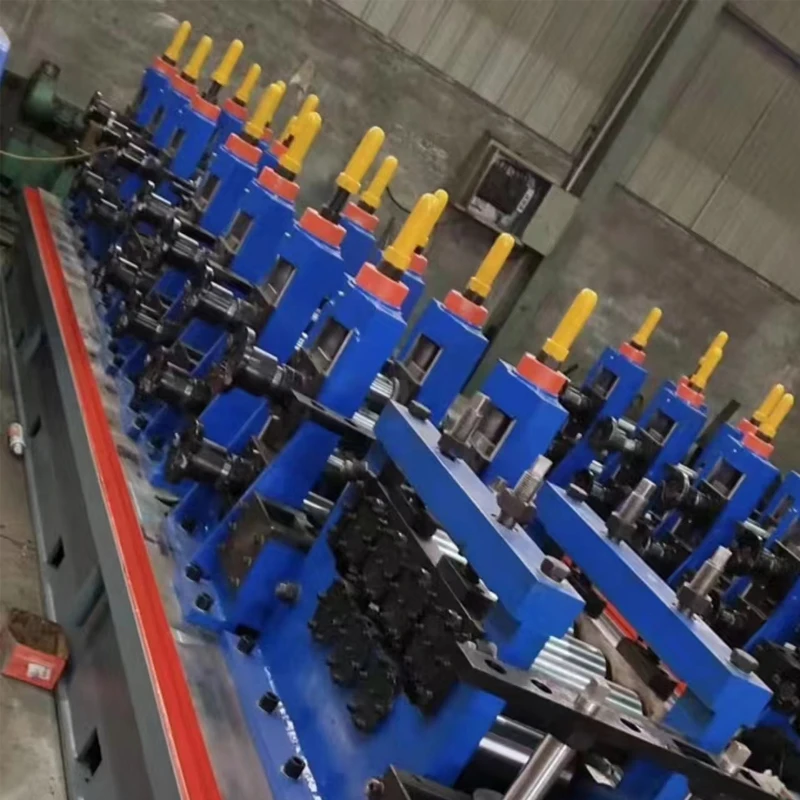flat straightening machine
Understanding Flat Straightening Machines
Flat straightening machines play a vital role in various industries, particularly in metalworking and manufacturing. Their primary function is to correct the warping and bending of metal sheets or plates, ensuring that the materials are flat and uniform before further processing or assembly. This article delves into the importance, working principles, applications, and advancements of flat straightening machines.
Importance of Flat Straightening Machines
In the manufacturing sector, the precision and quality of materials are paramount. Flat sheets that have been warped or bent can lead to significant issues during the production process, affecting everything from the structural integrity of the final product to its aesthetic appeal. Flat straightening machines address these challenges by providing a reliable solution for producing flat parts that meet precise specifications. This ensures that the subsequent processes, such as cutting, welding, and coating, can be performed effectively and with high accuracy.
Working Principles
Flat straightening machines operate on the principle of applying controlled pressure to the warped material. The machine typically consists of a series of rollers or blades that guide the metal sheet through the straightening process. As the sheet passes through the machine, it is subjected to a combination of tension and compression, which gradually works to eliminate any distortions.
Most flat straightening machines are equipped with advanced controls that enable operators to adjust parameters such as pressure, speed, and alignment. By fine-tuning these settings, operators can optimize the straightening process for different types of metal and varying degrees of distortion, ensuring that the final product meets the desired standards.
Applications
Flat straightening machines have a wide range of applications across various industries, including automotive, construction, aerospace, and appliance manufacturing. They are commonly used in the production of
flat straightening machine

1. Automotive Components In the automotive industry, flat straightening machines are essential for preparing metal sheets that will be used in car frames, body panels, and other critical components. Ensuring these parts are flat and free of defects is crucial for vehicle safety and performance.
2. Construction Materials Builders and manufacturers of construction materials often rely on flat straightening machines to process steel sheets for use in structural beams, roofing, and other building elements.
3. Aerospace Parts Precision is vital in the aerospace industry, where components must meet stringent quality standards. Flat straightening machines help ensure that aircraft parts are correctly processed, contributing to overall safety and reliability.
4. Appliance Manufacturing In the household appliance sector, straightened metal sheets are often used in products like refrigerators, ovens, and washing machines, where both aesthetics and functionality are key.
Advancements in Technology
The technology behind flat straightening machines has seen significant advancements in recent years. Modern machines often feature automated controls, allowing for increased efficiency and reduced labor costs. Additionally, the integration of robotics and artificial intelligence has led to smarter machines that can learn and adapt their settings for optimal performance.
Moreover, manufacturers are focusing on producing machines that offer energy efficiency and reduced waste, aligning with global sustainability goals. As industries evolve, flat straightening machines will continue to be an essential tool in ensuring the quality and precision of metal components.
Conclusion
In conclusion, flat straightening machines are indispensable in the manufacturing landscape. They not only enhance the quality of metal sheets but also contribute significantly to the efficiency of production processes across various industries. With ongoing advancements in technology, these machines will continue to evolve, meeting the growing demands for precision and sustainability in manufacturing.
-
High Frequency Straight Seam Welded Pipe Production Line-BzZhou Xinghua Machinery Equipment Manufacturing Co., LTD.|line pipe steel&welded gas pipeNewsJul.30,2025
-
High Frequency Straight Seam Welded Pipe Production Line-BzZhou Xinghua Machinery Equipment Manufacturing Co., LTD.|High Precision&Automated SolutionsNewsJul.30,2025
-
High Frequency Straight Seam Welded Pipe Production Line - BzZhou Xinghua Machinery Equipment Manufacturing Co., Ltd.NewsJul.30,2025
-
High Frequency Straight Seam Welded Pipe Production Line-BzZhou Xinghua Machinery Equipment Manufacturing Co., LTD.|Precision Welding, High EfficiencyNewsJul.30,2025
-
High Frequency Straight Seam Welded Pipe Production Line|BzZhou Xinghua|Precision Welding&EfficiencyNewsJul.30,2025
-
High Frequency Straight Seam Welded Pipe Production Line - BzZhou Xinghua|Precision Engineering&EfficiencyNewsJul.30,2025


